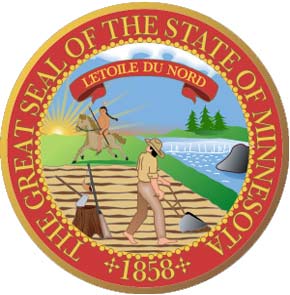Climate Change Adaptation - Minnesota

Climate Change History
Minnesota’s history includes the partial draining of thousands of acres of peatlands in the northern regions of the state. While originally seen as an economic resource, the exposed peat now poses a feedback-effect risk which Minnesota is working to mitigate. As Minnesota becomes drier and warmer, these exposed peat reserves are expected to oxidize and release carbon. In addition to the peatlands, climate change is expected to negatively impact the Prairie Pothole region of the state, which has already suffered significant losses to drainage and development.
Current & Future Action
Minnesota has taken a proactive stance on climate change issues. Climate change is recognized by the state Department of Natural Resources (DNR) as a key trend on their Conservation Agenda. The DNR has also formed several workgroups around specific aspects of climate change adaptation and mitigation. DNR has identified a dearth of accurate, down-scaled climate models available to use for planning purposes. The Galatowitsch et. al. report from 2008[1] is the current foundational study being used.
In the absence of satisfactory climate change models specific to Minnesota, the state has formed several climate change task forces. These include a task force about wetlands and their roles in adaptation and mitigation of greenhouse gasses. This task force is developing carbon accounting protocols related to wetlands.
Pilot Programs/Current Studies
Although climate change is not its primary focus, Minnesota does operate a wetlands trends and status monitoring effort. Each year, a portion of nearly five thousand plots are sampled based on a repeating three-year sampling cycle. The resulting data is used to estimate changes in Minnesota’s wetland resources. Three wetland-climate change related studies in Minnesota have recently received funding. The first is a peatland restoration project (“Winter Road”), the second is a study of carbon cycling into and out of both natural and modified peatlands (‘Peatland Carbon Sequestration’), and the third is a study of carbon burial in shallow lakes (“Carbon burial in wetlands”) . A study previously underway is analyzing methane flux in peatlands. Each of these projects will help clarify the role that adaptation and carbon accounting efforts will play for wetlands.
For More Information
For more information about the wetlands status and trends monitoring visit: http://www.dnr.state.mn.us/eco/wetlands/wstm_prog.html
For the Minnesota Department of Natural Resources page on climate change strategy visit: http://www.dnr.state.mn.us/conservationagenda/direction/climate_change.html
For the “Winter Road” restoration study proposal visit: http://www.aswm.org/pdf_lib/winter_road_peatland_restoration_LCCMR_proposal.pdf
For the “Peatland Carbon Sequestration” study proposal visit: http://www.aswm.org/pdf_lib/peatland_carbon_sequestration_LCCMR_proposal.pdf
For the “Carbon Burial in Wetlands” study proposal, visit:
http://www.lccmr.leg.mn/all_projects/2010_projects/work_programs_may/subd_3g_work_program1.pdf
Both of these were funded through the Minnesota Environmental and Natural Resources Trust Fund, their homepage is: http://www.lccmr.leg.mn/lccmr.htm
For more information about climate change and wetlands issues contact Doug Norris: (651)259-5125 doug.norris@state.mn.us
[1] Susan Galatowitsch, Lee Frelich, and Laura Phillips-Mao, “Regional climate change adaptation strategies for biodiversity conservation in a midcontinental region of North America” Biological Conservation no. 142 (2009): 2012-2022.
